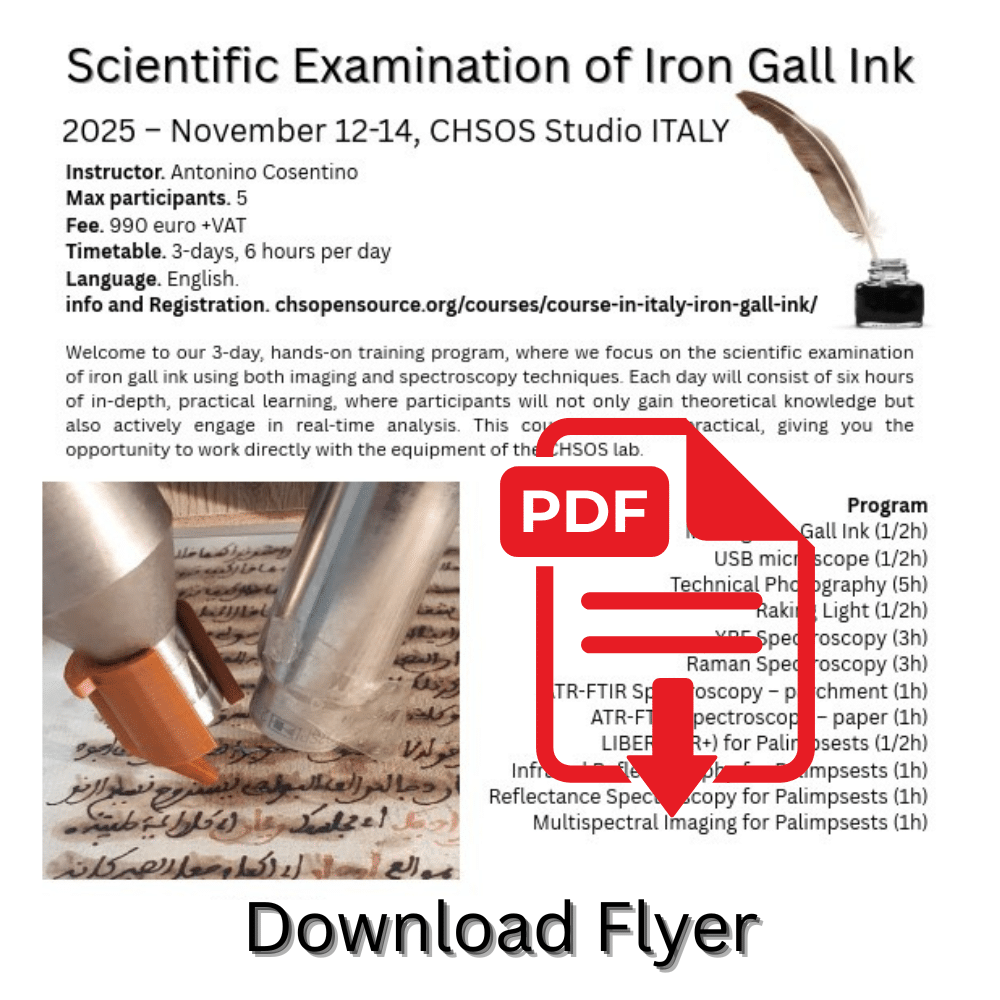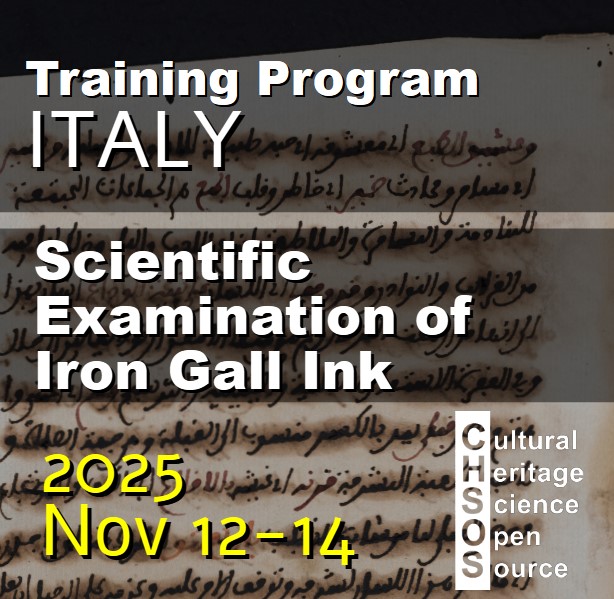Transmitted Infrared photography (IRT) is a well-established technical photography method that makes pigments more transparent than the standard Infrared photography.
This note illustrates this method showing results from Pigments Checker to evaluate, for each pigment, how this approach is better than the standard infrared photo. Eventually, we present the imaging done on a manuscript with a later added drawing that conceals part of the writing.
Technical Photography is usually performed in the reflection mode: the lamps (UV, VIS, and IR) are facing the object sitting on the same side of the camera. On the other hand, in the transmission mode, the object stands between the camera and the lamps. This approach can be implemented for all the 3 spectral ranges, UV, VIS, and, IR and we indicate these images by adding a T to the reflection mode acronyms. So, we have VIST, UVT, and IRT.
Up to now, the most successful and studied of these transmission modes is IRT, Transmitted Infrared photography.
IRT is part of the Technical Photography documentation and allows the detection of underdrawing and pentimenti [1, 2]. It is a very effective imaging method since pigments become even more transparent than in the usual IR photography method.
This approach is useful only for objects with translucent supports, such as paintings on canvas, and works on paper and historical documents. The IR lamp should face the back of the object while the camera looks at the front. The lamp should be shielded so that only the radiation through the support can reach the camera. Any other IR source in the room should be turned off to avoid diffused infrared bouncing on the object. In some cases, could be worth testing the method by changing the configuration and having the camera facing the back of the object. In general, the first setup is preferred because the drawing lines will appear sharper since the infrared is not diffused by the canvas.
Equipment
Figure [1] shows some of the equipment used to prepare the imaging presented in this note and this is the complete list:
• Nikon D800 camera modified full spectrum
• ROBERTINA Technical Photo filter
• ELIO halogen lamps
• SALVO UV-VIS-IR Imaging Panel
• Pigments Checker

Pigments Checker
IRT is so powerful in particular for white pigments, such as lead white and titanium white, the most common in art, respectively, before and after the 1920′. These pigments reflect a lot of the incoming infrared and, consequently, their hiding power is barely affected by the infrared coming from the front. They will just reflect most of the IR and they will not produce contrast between the ground and the underdrawing. This means they remain mostly opaque.
When the infrared radiation comes from the back (transmission mode), the infrared can penetrate the paint and the underdrawing becomes apparent in the resulted IRT image.
Pigments Checker, is our collection of historical pigments, ranging from antiquity to the early 1950′. The colors are laid with an acrylic binder on a cardboard support. Pigments Checker has a translucent support, such as that of a canvas painting or a work on paper. So, we can use Pigments Checker to practice those useful and effective imaging methods implying transmitted radiation, such as IRT.
Figure [2] shows Pigments Checker as we positioned it on the SALVO Imaging Panel for this test.
Figure [3] illustrates the results for some of the white pigments. The advantage of the IRT method is unmistakable. Crossed lines that were drawn on the bare cardboard, are now clearly evident as if the white paint was not there. The same happens for many of the other pigments. Figure [4] illustrates other 2 examples.



Case study: item #17
From CHSOS Educational Collection, we selected item #17, a peculiar manuscript combining different styles, making difficult its regional and historical classification. This manuscript has an illustration on top of the writing, making it an interesting case for IRT photography. Figure [5] shows the item positioned on SALVO, ready for the imaging process and figure [6] presents details of the VIS and IRT photos. The pigments, white, yellow, blue, and red become transparent in the IRT method and reveal the writing beneath them.


Conclusions
Infrared transmitted photography is a well-established photographic method for the analysis of works of art and historical documents on translucent supports, such as paper and canvas. SALVO, Imaging Panel makes it easy to switch among the 3 spectral regions, UV, VIS, and IR. The resulting images can be easily registered (overlapped) since the object can stay in place during the imaging process. There is no need to change lamps or move the object since the different LEDs can be switched on and off simply by the remote control.
References
- A. Cosentino “Transmittance spectroscopy and transmitted multispectral imaging to map covered paints” Conservar Património 24, 37-45, 2016.
- A. Cosentino “Infrared Technical Photography for Art Examination” e-Preservation Science, 13, 1-6, 2016.
-
 SALVO – UV-VIS-IR Imaging Panel1.890,00€
SALVO – UV-VIS-IR Imaging Panel1.890,00€ -
 Pigments Checker (TP-MSI calibration card included)730,00€
Pigments Checker (TP-MSI calibration card included)730,00€ -
 Robertina – Technical Photography Filters Set760,00€ – 1.290,00€
Robertina – Technical Photography Filters Set760,00€ – 1.290,00€








